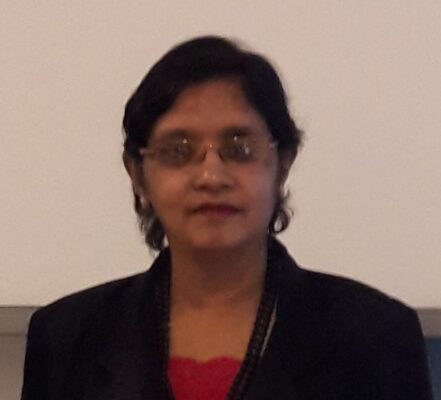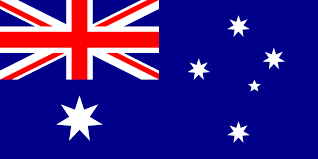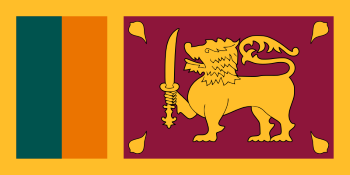Reinforcing 74 years of Australia and Sri Lanka diplomacy
By Arundathie Abeysinghe
 Australia and Sri Lanka have a robust and enduring bilateral relationship of 74 years since the establishment of diplomatic relations in May 1947. The Asia Pacific Nation and South Asian Island have close foreign relations from May 1947 to date.
Australia and Sri Lanka have a robust and enduring bilateral relationship of 74 years since the establishment of diplomatic relations in May 1947. The Asia Pacific Nation and South Asian Island have close foreign relations from May 1947 to date.
In 1946, the Federal Minister for External Affairs, Commerce and Agriculture recommended to the Australian Parliament that Australia should be represented by a Commissioner in *Ceylon, as there was a likelihood of Ceylon being granted independence after India. Thus, in 1947, Mr. Charles William Frost, a Tasmanian ex-Labor Member of Parliament was posted as Australia’s first Commissioner to Ceylon.
Sri Lanka also set up a High Commission in Canberra, Australia and Mr. J.A. Martensz, an appointed Member of the First Parliament of Ceylon assumed duties as the first High Commissioner of Ceylon in Canberra, Australia.
With the visit of the former Australian Prime Minister Robert Menzies (in office from1939 – 1941 and from 1949 – 1966) to Sri Lanka in 1950s, bilateral cooperation among Australia and Sri Lanka had strengthened further.

In 1951, former Prime Minister D.S. Senanayake was the first high profile diplomatic visitor to visit Australia. In 1954, former Prime Minister Sir John Kotelawala visited Australia, in 1978, former President J.R. Jayewardene, in 2011, former President Mahinda Rajapaksa participated in *CHOGM summit in Perth and in 2017, former Prime Minister Ranil Wickremesinghe and former President Maithripala Sirisena have undertaken state visits to Australia. Similarly, former Australian Prime Ministers Gough William, Tony Abbott and Malcolm Turnbull have visited Sri Lanka in the past.
Meanwhile, in 2007, a bilateral trade agreement was set up between Australia and Sri Lanka valued at $232 million per annum to import vegetables and dairy products from Australia and to export tea, textiles and rubber to Australia.
During the past several years, Australia and Sri Lanka have collaborated in several multilateral forums; the *Commonwealth, *Colombo Plan and the *Indian Ocean Rim Association (IORA).

The presence of former Premier Tony Abbot at the Colombo Commonwealth Summit held in 2013 served as a transformative event that set up a firm diplomatic foundation.
During former Prime Minister Malcolm Turnbull’s visit to Sri Lanka (in 2017), he had stated: “I look forward to continuing our discussions on strengthening our economic links, defence engagement and our work together to combat trans-national crime particularly people- smuggling.”, indication of further strengthening bilateral relations between the two countries.
Longstanding bilateral relations of Australia and Sri Lanka are not limited only to diplomacy, instead there are over 100000 Sri Lankan Australians living in Australia who have migrated as skilled workers during the past several decades contributing their skills to the Australian workforce, a great strength to Australia’s economy.
Apart from trade and economic cooperation, education is a main segment of the bond between
Australia and Sri Lanka as over 9000 Sri Lankan students pursue higher education in Australia annually, in different disciplines including *STEM fields. Australia is the second most popular tertiary study destination for Sri Lankans and the majority of these students have contributed to Australia’s skilled workforce too. According to many Sri Lankan students pursuing tertiary studies in Australia, Australian Universities provide excellent study opportunities with world-class researchers and lecturers, research-intensive institutions, modern facilities including excellent libraries and laboratories, good accommodation options as well as a vibrant and innovative culture.
- Ceylon – Sri Lanka gained Independence from British Colonials in 1948. In 1972, Ceylon became a republic within the *Commonwealth and Ceylon was thereafter known as Sri Lanka.
- CHOGM summit – Commonwealth Heads of Government Meeting (CHOGM) is an official biennial summit of leaders from Commonwealth Nations.
- Colombo Plan – The Colombo Plan for Cooperative Economic and Social Development in Asia and the Pacific was initiated at the Commonwealth Conference on Foreign Affairs held in Colombo, Ceylon (at present Sri Lanka) in January 1950. It was launched on July 1st, 1951 as a cooperative venture for the economic and social advancement for the people of South and Southeast Asia. Many prominent people represented their countries at the launching ceremony; Sir. Percy Spender, Minister for External Affairs, Australia, Mr. Ernest Bevin, Foreign Secretary, Britain (present UK),. Lester Pearson, Minister for External Affairs, Canada, Shri Jawaharlal Nehru, Prime Minister of India as well as Minister of External Affairs, D.S. Senanayake, Prime Minister of Ceylon and J.R. Jayewardene, Minister of Finance (later President of Sri Lanka). Initially, this was a group of seven Commonwealth Nations – Australia, Britain, Canada, Ceylon, India, New Zealand and Pakistan which expanded later as an intergovernmental organization of 27 members including non-Commonwealth countries.
- Commonwealth – The Commonwealth of Nations known as the Commonwealth is a political association of 54 member states which are territories of the former British Empire. The 54 countries are in Asia, Africa, the Americas, Europe and the Pacific.
- Indian Ocean Rim Association (IORA) – A dynamic inter-governmental organization set up with the objective of strengthening regional cooperation and sustainable development within the Indian Ocean Region (IOR), through the Association’s 23 member states and nine dialogue partners. Founded in 1995, initially, IORA was known as the Indian Ocean Rim Initiative and the Indian Ocean Rim Association for Regional Cooperation.
- STEM – Science, technology, engineering and mathematics is a broad term to group together these academic disciplines and refers to subjects that fall under these disciplines including Computer Science.







